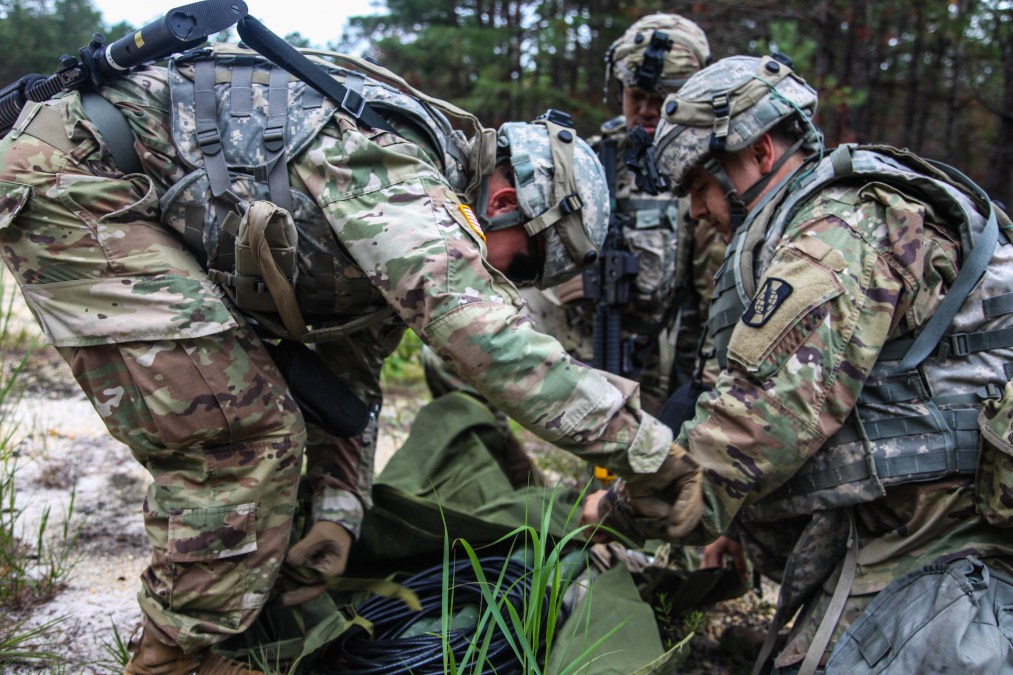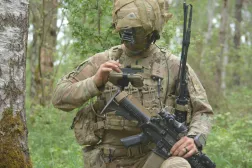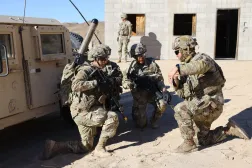Army sets sights on flexible contracting, adaptable network

As the Army is looking at adjusting its overall buying model to be more flexible, officials say the service’s network portfolio must be adaptable to new technologies and threats.
“We have got to have a network, a future network that is adaptable, which means every program in my portfolio has got to embrace that adaptability. Some of the technologies and capabilities … [in the portfolio] didn’t exist two years ago,” Mark Kitz, program executive officer for command, control and communications-tactical, said Thursday at the Global Force Symposium in Huntsville, Alabama. “I can’t have a five-year contract with industry that doesn’t acknowledge this rapid pace of innovation, this need for our commanders to adapt their network. That, I think, is the challenge between us and industry to get to those flexible and adaptable contracts and means of doing business.”
In certain areas and portfolios, the Army wants to have the flexibility to insert new capabilities as the threat changes and technology matures. This also means adjusting fielding models from total Army to just select units.
“For some capabilities that we need, those [traditional] buying models [of fielding across the entire Army] will not get us what we need quickly enough. But the good news is that we’ve started changing some of our approach and innovating the way that we acquire them in critical areas,” Undersecretary Gabe Camarillo said at the conference this week. “I always like to point out, this started out several years ago with our tactical network, where we began developing a tranche buy approach through capability set fielding where vendors would compete for successive lots of production — and we would enable those team of vendors to be able to continue to iterate and upgrade capabilities over time and we had about a two-year cycle.”
The Army’s network portfolio has been ahead of this curve for some time with its capability set paradigm, which provided technologies to units every two years, each building upon the previous delivery.
As the Army is looking to continue to make changes and tweaks to its network architecture, officials have noted they will need certain capabilities to be adaptable and tailorable for formation, echelon and theater. As the Army is moving away from the capability set paradigm, it will look to insert technology on a more frequent, iterative basis.
More flexible buying and fielding
Camarillo has discussed previously the need for an updated model not based on the traditional, hardware-centric approach.
During his appearance this week at the Global Force Symposium, he provided more details regarding the need to adjust within the Army and work with industry.
“The reality is that our processes are designed around two relatively fixed constraints. The first is the two-year appropriations process and second, the limits of how long it takes to run the competitive contracting process, which, you know, is required by law. We can work on flexibility in both of these, but in reality, we have to design strategies for a subset of the capabilities that we need that utilizes creative approaches around both of these hard constraints,” he said.
“I know that most of our industry partners that rely on traditional buying models, might think that some of this is a big shift. Some programs may only be profitable once you achieve a large run of production over several years. But if the Army is going to keep changing its technologies and if it’s going to adopt new innovation, we need to ensure that there is incentives in place to continue to invest in the new generation of capabilities that we need. Changing our buying models is really not just a luxury, it’s actually an imperative in order to deliver the warfighter what they need,” he added.
Camarillo noted there is a “quiet revolution” inside the Army where for some systems, the entire force doesn’t have to be fielded. Instead, different capabilities, units and formations can be fielded over time.
One of the recent successes includes unmanned aerial systems.
“We’ve innovated the buying models [of small commercial UAS] to keep pace with the rapid rate of innovation. For example, using more capability-based requirements and multiple award task order contracts to ensure that multiple vendors can keep innovating and compete for task orders,” Camarillo said.
Additionally, smaller production quantities can be attractive.
“As we look at smaller production quantities of certain items, we have to be willing to accept higher costs in order to keep pace with the investment required to upgrade them,” Camarillo said. “All of this for some could be new and it could be uncomfortable, but I think it can definitely work. There are significant upsides, I think, both for industry and certainly for the Army to adapting our buying models to keep pace with the changes.”
As-a-service
The other paradigm the Army is adopting is the as-a-service and on-demand model.
“We’ll continue to do research on radio-as-a-service looking at our mission command capabilities, modeling what we’ve done already on the SATCOM terminal side where we’re no longer buying individual terminals, we’re paying for it on an as-a-service basis,” Camarillo said.
The network community has initially embraced this model, especially SATCOM-as-as-service given its maturity in the commercial space.
“I think that’s a much more mature option. I think the industry is much more mature, there’s a much more robust commercial demand. I think we’re going to much more aggressively pursue SATCOM now,” Kitz said at the conference.
In September, the Army issued awards to two companies under a pilot effort for SATCOM as a managed service to help inform a potential way ahead and possibly broader strategy for as-a-service models.
The Army is looking into other as-a-service models such as counter-UAS for fixed sites and the possibility of a radio-as-a-service effort, with a potential award expected soon.
“We want to engage with industry on where is our return on investment if we go to an as-a-service model,” Kitz said. “What the Army wants to get to is an on-demand model. We want units to use the radios that they’re being given and then when they need capacity, we have an on-demand model to do that.”
He noted that he’s observed situations where units aren’t using the radios they’ve been given, in some instances, using less than 50 percent of the radios they’re equipped with at combat training center rotations.
“Nobody wants to be in the business of giving radios to units that are not going to necessarily leverage all those radios,” Kitz said. “There’s a lot that goes into the relationship with industry in this as-a-service model. And I really see what the [undersecretary] talked about today, what we’re going after with this pilot program is a dialogue with industry. Where are the breakpoints, how can we make sure we give these commanders the radios they need to deploy now and the radios that they need when they need capacity to increase?”






